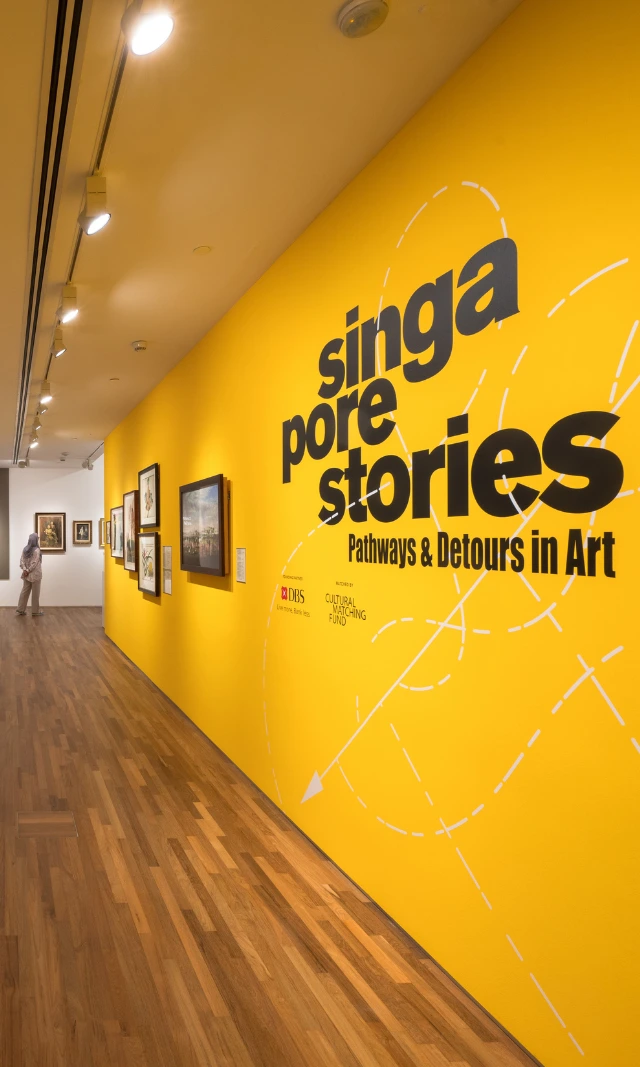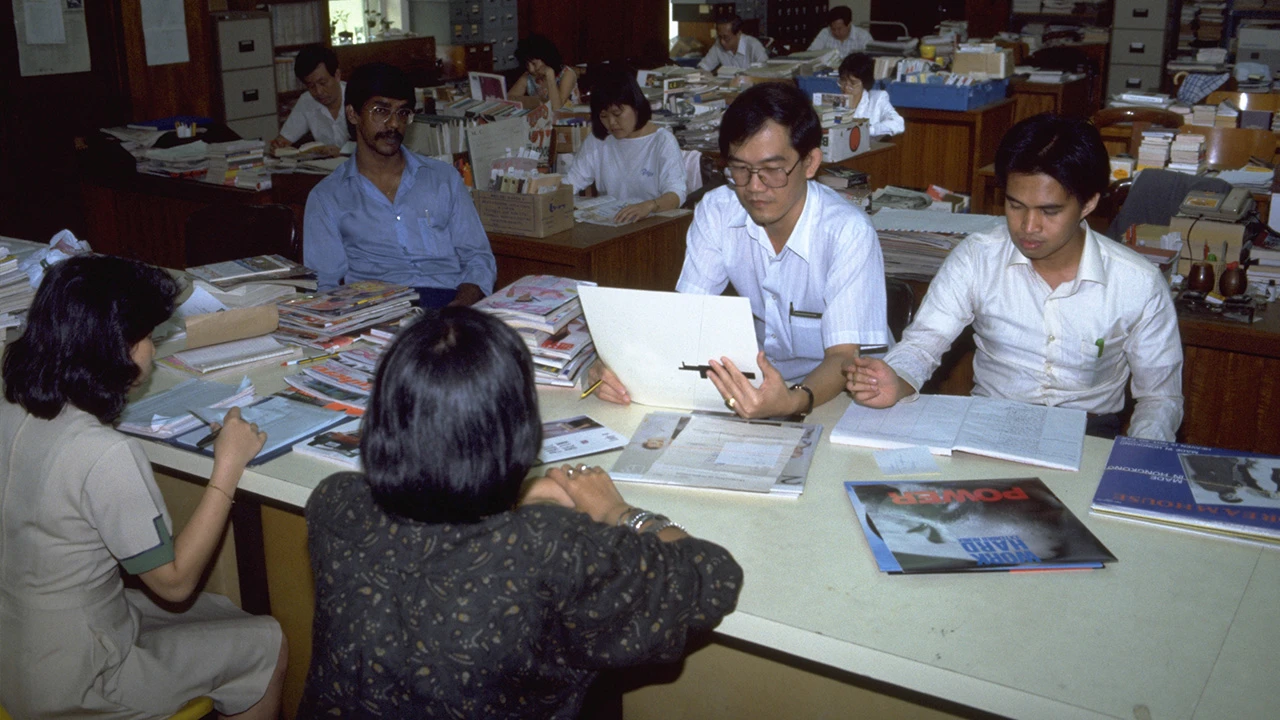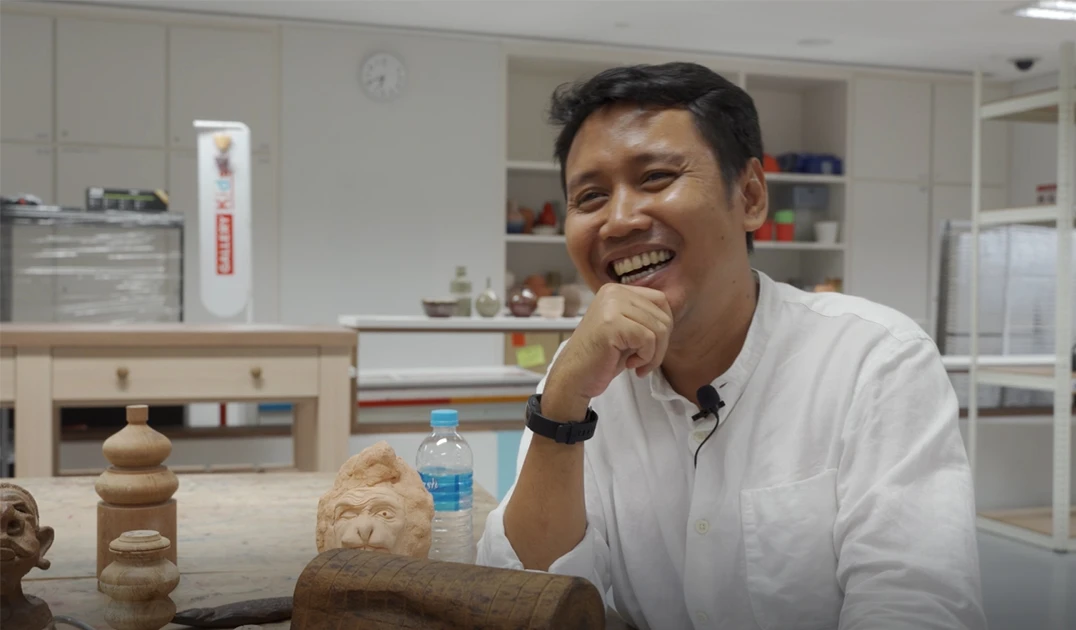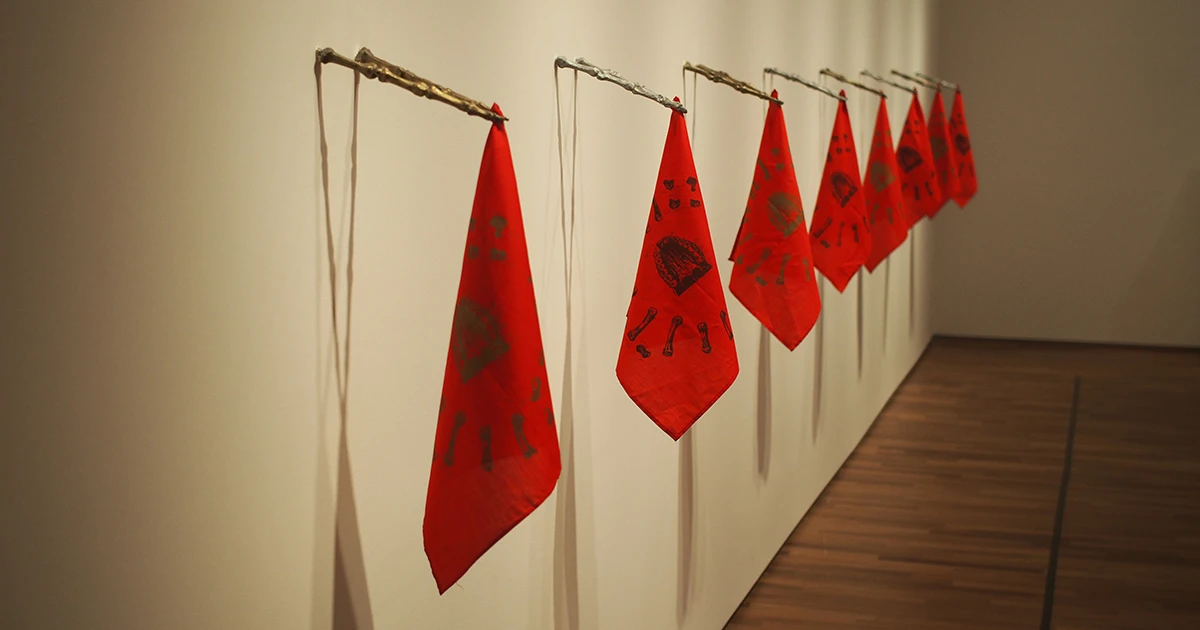A Conversation with Lin Hsin Hsin on Outer Space and OSIRIS-REx
On 24 September 2023, the sample capsule from OSIRIS-REx returned to Earth carrying NASA's first asteroid sample, taken from the surface of Bennu. The remainder of the spacecraft will continue its investigations into our solar system, carrying with it on board a chip etched with artworks, three of which are by Singapore artist Lin Hsin Hsin. Hear from the artist about how she selected these works, and how her practice is founded on science, mathematics and technology.
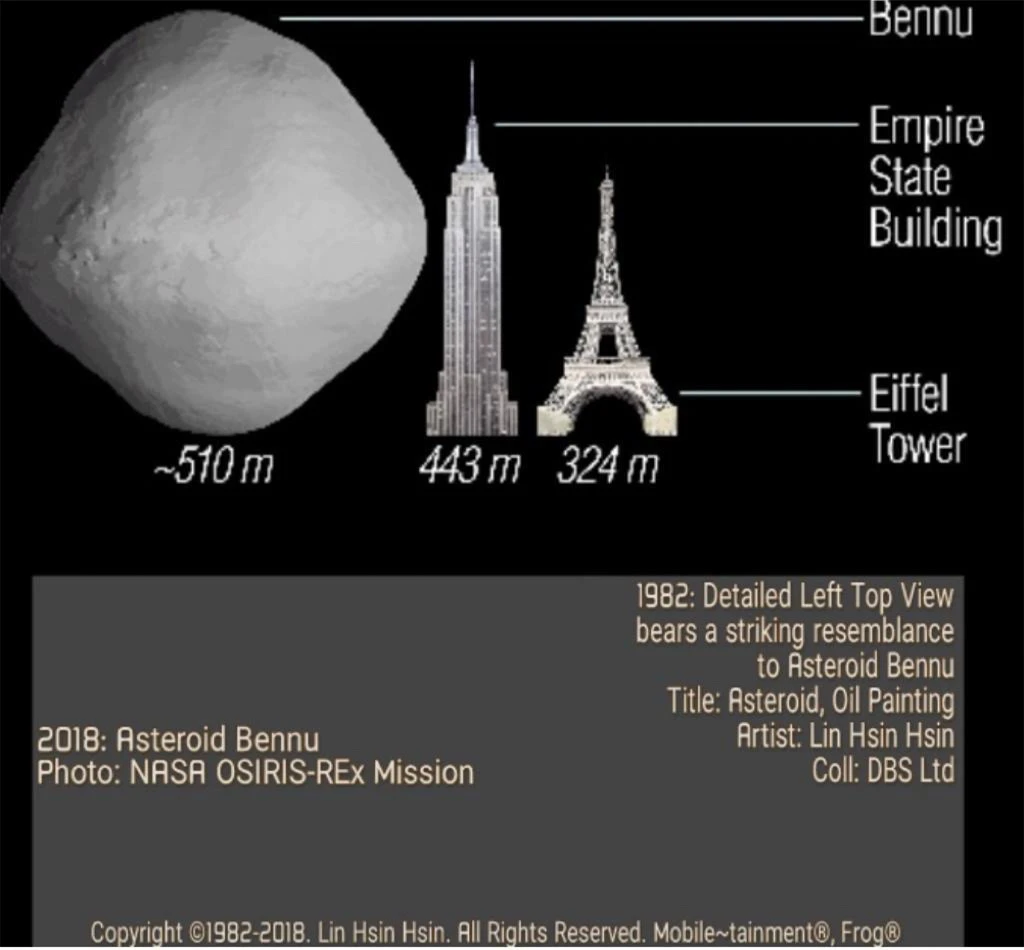
In 2016, NASA launched the Origins Spectral Interpretation, Resource Identification, Security-Regolith Explorer (OSIRIS-REx) on the first US Mission to study the near-Earth object (NEO) asteroid Bennu and collect a sample to return to Planet Earth for study. Scientists believe that Bennu may hold clues to the origins of the solar system, and can help us to identify the sources of the water and organic molecules that found their way to Earth. As part of this mission, NASA called for art submissions from around the world to be made through the social media platforms Twitter and Instagram; shortlisted works would be carried onboard the spacecraft into space. In the end, the artworks etched on the Intel chip onboard OSIRIS-REx included three works by Singapore’s canonical digital artist Lin Hsin Hsin (林欣欣): Asteroid (1982), sunFX (2016) and roboDroid (2016). A computational aesthetics specialist, she is an award-winning interdisciplinary artist, poet, composer, IT visionary and inventor who has made groundbreaking forays in digital art, and launched the first virtual museum in the world in 1994.
The earliest work, Asteroid (1982), was first presented at Lin’s third solo exhibition in 1984. It is one of Lin's many explorations of asteroids as relatively small inactive, rocky bodies orbiting the Sun. Part of her Man & His Universe series, Asteroid is one of Lin’s most significant on this theme; the series of abstract paintings visualise the surface of these celestial bodies and imagine the complex scientific processes that occur in the universe. In 2021, the National Gallery Singapore presented @speed of thought, a solo exhibition of Lin’s work that presented this piece alongside Lin’s poetry, music and new digital artworks.
sunFX (2016) is a digital artwork based on “The Four Mathematical Theorems” invented by Lin. It visualises the effect of how the sunlight interacts with asteroids via the Yarkovsky effect (based on the observations by British astronomer Richard C. Carrington). A 2D-moving image, it imagines a continuous stream of particles flowing out from the Sun.
roboDroid (2016) is another digital work based on "The Four Mathematical Theorems” by Lin. Also a 2D-moving image, it imagines the robotic camera onboard OSIRIS-REx collecting fine-grained samples from Bennu.
On 24 September 2023 (Mountain Time Zone), samples from Bennu returned to Earth while the mission continued, carrying with it the artworks Asteroid (1982), sunFX (2016) and roboDroid (2016) deeper into space to another asteroid, Apophis.
It is worth considering Lin’s contributions to Singapore’s art history in relation to the voyage of her works into space. Celebrating their ongoing voyage, National Gallery Singapore curator Kathleen Ditzig interviewed the artist about the OSIRIS-REx project and more generally about its ties to her oeuvre.
Kathleen Ditzig (KD): Do you remember how you learnt about OSIRIS-REx and why you chose to send your artworks into space?
Lin Hsin Hsin (LHH): Yes, I remember I sighted the Call for Submissions from NASA for OSIRIS-REx Space Mission to asteroid Bennu in March 2016; it warmed my heart, and hence I responded immediately.
KD: Why did you choose to send Asteroid (1982), sunFX (2016) and roboDroid (2016) into space? Why these three specific works?
LHH: These artworks were specifically about asteroids, as I explain here:
Asteroid (1982)
presents an astronomical object orbiting the Sun that is not a comet; comets were historically referred to as objects inside the orbit of Jupiter, with larger ones called planetoids.
Back in 1982, I painted two asteroid artworks.
1. I believe these are the first two asteroid paintings in the world.
2. This was even before NASA had set up a department of exploring & investigating asteroids in 1998!
sunFX (2016)
Solar wind contributes to fluctuations in celestial radio waves observed on the Earth, through an effect called interplanetary scintillation.
sunFX is my vision of how sunlight pushes asteroids. The existence of a continuous stream of particles flowing outward from the Sun was first suggested by British astronomer Richard C. Carrington.
roboDroid (2016)
presents my imaginations of an elegantly simple sampler head with an articulated arm for contacting the surface of asteroid Bennu; it would collect fine-grained material as the sample collector touches down on the asteroid. It is a visualization of the TAGSAM (Touch-And-Go Sample Acquisition Mechanism) sampler head developed by Lockheed Martin.
KD: Are Asteroid (1982), sunFX (2016) and roboDroid (2016) your first works to travel across space and be part of such a long-term voyage?
LHH: Yes, it is the first time my artworks are to be "seen" in space.
Sep 7, 2016 to Sep 24, 2023
![]() 1.93 billion kilometers to reach asteroid Bennu
1.93 billion kilometers to reach asteroid Bennu
![]() 2.25 billion kilometers back to Planet Earth
2.25 billion kilometers back to Planet Earth
Every artwork has traveled 4.18 billion kilometers across the universe.
Sep 24, 2023 to Apr 13, 2029
![]() 287,095,507 kilometers to reach asteroid Apophis
287,095,507 kilometers to reach asteroid Apophis
![]() ~310,000,000 kilometers back to Planet Earth
~310,000,000 kilometers back to Planet Earth
Every artwork will be traveling a total of 597 million kilometers across the universe
Total distance that each artwork would have traveled: 4.78 billion kilometers
KD: Can we read them in taking on this journey as a further exploration of time as evidenced by your Time Series, consisting of 123 works made between 1990 and 1991, which was presented at Singapore Art Museum and described as being about “your anticipation and participation of time”?
LHH: YES.
TIME is the essence of life—the most critical phenomenon, as experienced by every creature on earth & in the universe. Every encounter, moment by moment, is a measurement of time, and, this is in fact, is a participation of time.
Life is a summation of time.
I develop software as well as compute aesthetics. These are examples of participation of time.
My creation of moving images is also an example of participation of time.
In life, you set & work towards your goals for your achievements, both in work & play. In doing so, you anticipate your progress throughout this timeline, from start to end, and this is an anticipation of time.
As a poet, in my Artificial Intelligence poem, 1989, I ![]()
...
artificial intelligence
was first taught by human brain
then the machine be trained
next you command, perform & refrain
...
it will flourish, I foresee
As an IT visionary, I organized & spoke at the first AI conference in Singapore in 1989.
KD: How has their journey into space changed your relationship to these three artworks Asteroid (1982), sunFX (2016) and roboDroid (2016)? Do you view them differently now?
LHH: Interestingly, the NASA OSIRIS-REx space mission has been very informative as I was bestowed with ample knowledge on asteroids as I delved further into the subject of SPACE.
When I first saw the photo of the actual Asteroid Bennu, I was very excited about my visualization from 1982 as they bear striking similarities. As such, I created a mini series titled: "Imaginations vs Realities."
![]() A for Asteroids
A for Asteroids
![]() Base Station
Base Station
![]() Base Station Liftoff
Base Station Liftoff
![]() OSIRIS-REx Liftoffs
OSIRIS-REx Liftoffs
![]() Candle-in-space
Candle-in-space
![]() Resemblance
Resemblance
Both sunFX (2016) & roboDroid (2016) reinforced the importance of "Imagination versus Realities" as I reflect on how:
“Imagination is more important than knowledge”
— Albert Einstein
As I tracked the OSIRIS-REx mission over the last seven years, it has deepened my relationship with the universe; I pondered upon sea level changes as I measured icebergs when I entered into the NASA sea level portal during my participation as a Data Scientist in the NASA Hackathon, 2019; this is in contrast to when I only digitally mouse-painted the 100 digital artworks on icebergs in 2007.
KD: How has space travel figured into your practice and interest in the intersections of art and science?
LHH: YES, space travel and crossing the Kármán line would be my dream ![]()
Though I have met Buzz Aldrin, the 2nd man to the moon, and many other Astronauts, and visited a few NASA Space Centers, I have yet to experience the non-gravity state!
However, I computed the aesthetics of astronomical space travel in a series titled “dare to dream”:
![]() imagine
imagine
![]() discovery
discovery
![]() the Race to Space (with poem)
the Race to Space (with poem)
![]() Hercules
Hercules
![]() νίκη
νίκη
![]() space glory
space glory
to celebrate the dawn of commercial space travel, mid-2021.
Prior to this event, I was the only Singaporean invited to participate in "The Year of Astronomy" Exhibition in France, 2009.
Beyond which, I was thrilled when the James Webb Space telescope revealed incredible Jupiter views which had remarkable similarities to my ![]() Jupiter Symphony (1988).
Jupiter Symphony (1988).
By the way, I saw and touched the stones & rocks of Planet Mars in 2019.
KD: Your idea of science being the “governor” of art is an important one. How do you think scientific developments from the 1990s to now have changed art for you as an artist?
LHH: Right from the onset. Science is the governor of art.
![]() A tube of oil paint: what’s it? Chemicals as pigments infused with toxic cadmium oxides.
A tube of oil paint: what’s it? Chemicals as pigments infused with toxic cadmium oxides.
![]()
![]()
![]() are constructed with specifications.
are constructed with specifications.
Digital Art anchors on mathematics, science & technology to achieve:
![]() Scalability
Scalability
![]() Security (authentication & replication)
Security (authentication & replication)
![]() Speed (1 millisecond I/O time)
Speed (1 millisecond I/O time)
With [FAME] - Finger Assisted Mathematical Engine, I have successfully established BeyondAI™.
As such,
What is ART?
I define ART as:
Read from Left to Right:
Art
Requires
Technology
Read from Right to Left:
Technology
Redefines
Art
It clearly manifests that Science is the governor of art.
Editor's note: The interview has been published with minimal edits to the artist's voice and the formatting of her answers.








